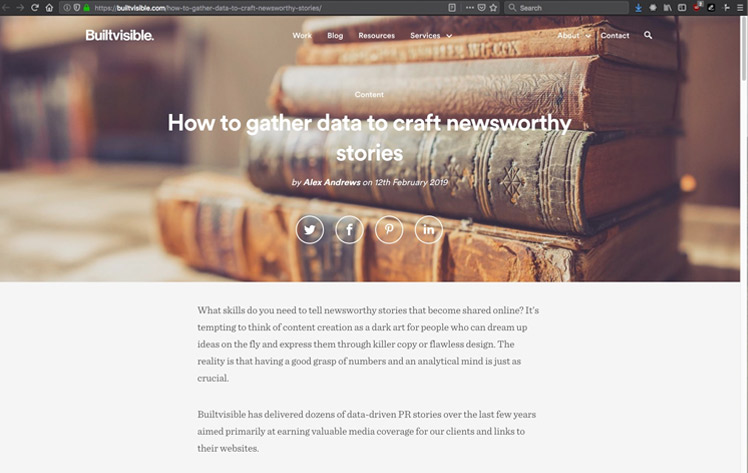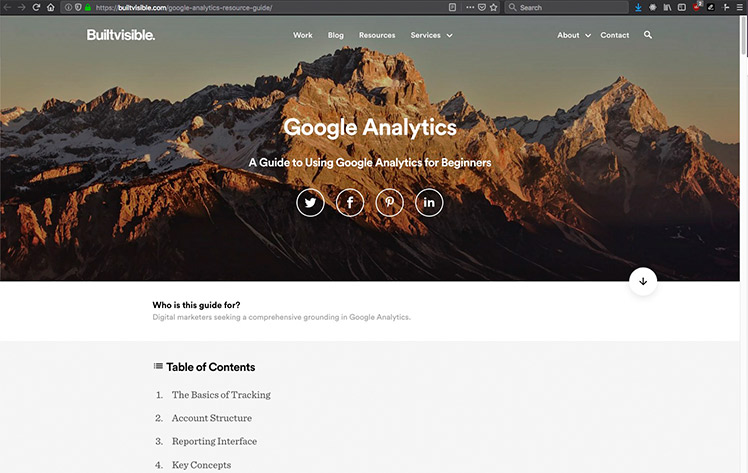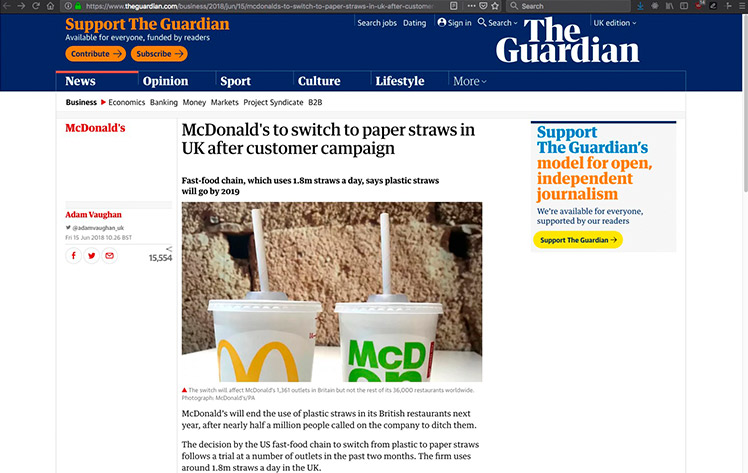How can content marketing help you earn the trust of your B2B audience?
Within the climate of scepticism, with 42% of buyers not knowing which brands to trust, there’s a huge opportunity for content marketing. A 2018 CSO insights study suggested that B2B buyers have a strong preference for self-education in the early stages of the buying process and over 70% of B2B buyers prefer to have a clear understanding of their needs before they talk with a sales rep. This is where you should focus your content marketing efforts.
To rebuild trust and restore faith in the system, institutions must step outside of their traditional roles and work toward a new, more integrated operating model that puts people— and the addressing of their fears—at the centre of everything they do.
Edelman Trust Barometer
1. Listen first
My biggest piece of advice for building trust through content would be to listen first, observe customer behaviours and really try to understand your audience’s needs and goals in relation to your product or service. Then, once you’ve listened, tailor your advice, expertise and insights directly to those observations.
A study in the Harvard Business Review found that listening to buyers and taking a proactive approach can increase purchase ease by 86%.
There are several ways to listen to your audience, each one has its own merits:
Firstly, analyse how your current customers interact with the content on your site:
- What type of content is most likely to lead a prospect to get in touch?
- What causes them to leave the site?
- How many times do they visit before taking positive action?
Secondly, wherever possible, ask your customers directly:
- What do they expect from your website?
- What information are they looking for that is not currently available from you or your competitors?
- What KPIs are they working towards and how can your content help meet them?
- What do they enjoy and what frustrates them about the available content?
Recently, customer interviews for our largest B2B client found that visitors to these pages simply found it hard to understand the processes the business was offering. Fixing this was as straightforward as adding step-by-step process breakdowns to the pages for maximum clarity.
Finally, ask your sales and customer services teams:
- What are clients’ most frequently asked questions?
- Which pieces of existing content do they often refer to and why?
- Are there any barriers to sale which could be resolved with content?
The key is to ask your audience about their problems rather than drown them out with your solutions. To earn trust, you should use your content marketing to teach audiences something they didn’t already know without any ulterior motive.
Our recent guide on newsworthy data gathering is a good example of this principle in action:

2. Make it personal
You’re most likely trying to build a long-term relationship with your customers. Just like any serious relationship, the personal touches count. By tailoring the content you serve to specific audience groups and individuals, you’re more likely to satisfy their needs and in turn, build their trust.
Here are a few ideas to help you add the personal touch:
- Arm your sales and client services teams with content. Make sure anyone who is talking to clients knows about all the great assets you produce. Teams can then recommend resources to the prospects who will find them most useful. To analyse the effectiveness of this method of distribution, create personalised campaign tags to track the customer journey.
- Tailor your tone of voice to your audience. Just because you’re discussing business topics, there’s no need to assume that all B2B customers need to be spoken to in a formal way. We recently produced content for a huge invoicing platform and the language we used is informal and full of personality – who said accounting had to be boring?
- Never assume your prospects are as technically fluent as you are. Personalise your content by offering varying levels of technical detail on complex products. This allows you to cater to different degrees of understanding and ensures you don’t alienate certain groups.
We tend to mark our technical resources with a corresponding level such as this Beginners’ Guide to Google Analytics or our more advanced Ultimate Guide to Log File Analysis.

3. Be transparent
The easier you make it for potential clients to get to know you, the easier they’ll find it to trust you. Transparency can be difficult to achieve, but here are my top tips to tackle the issue with content:
- Ensure your information architecturemakes it really easy to find information about you, your business, your history, your products and your existing customers.
- Explain your products in detail and let prospects know what to expect when working with you. This should be based on the experiences of existing customers.
- Go behind the scenes and demonstrate your unique processes.
- Answer the difficult questions up front with FAQs on product pages.
- Openly compare yourself to competitors and acknowledge your differences as well as your USPs. You might not offer the lowest price but admit that and explain the valid reasons why.
- As far as possible, display pricing, ratings, lead times and details about technical support.
If you’re not sure how to display pricing, here’s a really interesting study by Benjamin Brandall who analysed the pricing pages of the 250 most successful SaaS products in the world.

Image: process.st
4. Be consistent
B2B sales cycles are often long and complex so earning and maintaining trust requires consistency and commitment. There are several things you can address immediately in order to improve consistency and, in turn, earn your audience’s trust:
- Have a core set of values and stick to them. Anyone who has contact with clients, existing or prospective, should use the values as a guiding principle for all communications.
- Review your online presence. Does your mobile site or app match your desktop experience? How are you represented in the knowledge graph?
- Just as importantly, make sure you are represented accurately offline. From conference presentations to sales decks, does your brand message remain consistent?
5. Demonstrate proof of your competence
Customers just want to be able to trust that your company can solve their problems and it is your job to demonstrate that it absolutely can. Content marketing in all its forms is the perfect tool to hammer that message home. Here’s how you can do it:
- Wherever and whenever possible, demonstrate the specific outcomes of your work with examples. This is the most tangible way to prove your competence and allow potential customers to envisage what you could do for them.
- Understand where your audience goes to find information and be present. To legitimise claims of competence, your brand should play an active role in your industry community including speaking at industry events, contributing to discussions in forums, on social and in industry publications.
- When publishing articles, list your authors and include a headshot and a detailed bio. Countless studies have shown the link between building trust and seeing someone’s face. In fact, this LinkedIn study suggests that users with photos receive nine times more connection requests. Similarly, a verifiable author reputation not is not only a factor in Google’s search quality guidelines, but studies have shown that users deem information more credible when an author’s expertise is established online.
- Embrace reviews, case studies and testimonials. Better yet, offer to put prospective clients in touch with existing clients. It will speed up the research phase and decision making. Respond to reviews and follow up with specific action – demonstrate that you changed your ways of working because you heard what your customers had to say and acted upon it. Just like when McDonalds removed plastic straws from their UK restaurants in response to public pressure.

6. Be authentic
Outside of the B2B world, we recognise the need to be more vulnerable in order to forge deeper and more productive relationships. You can apply this theory to the way you communicate with customers in order to earn their trust. Here are some things to try:
- Share more than you might initially be comfortable with. Share analyses of difficult projects, write about issues your industry is struggling with and your own work-in-progress solutions. Ask your customers for their help and feedback and always own up to mistakes. This might seem counterintuitive but admitting you’re not perfect is much more believable and trustworthy than pretending you get everything right 100% of the time.

- Avoid stock photography. You need to form a human connection with potential customers in order to establish trust and that can be difficult if you’re not meeting face-to-face. The next best thing is to share real photos and video of your people, products and premises wherever possible within your content. From your website imagery to your social media channels, give potential customers an authentic insight into your brand and introduce them to the people they will be working with on a day-to-day basis. Here we are on International Women’s Day 2019

I hope you found these tips useful and if you’re interested in exploring the topic further, come and listen to me discuss the issue of trust in B2B content marketing on the CMA Panel at The B2B Marketing Expo on Thursday 28th March. You can see the full panel listing and get your tickets on the B2B Marketing Expo site here.
